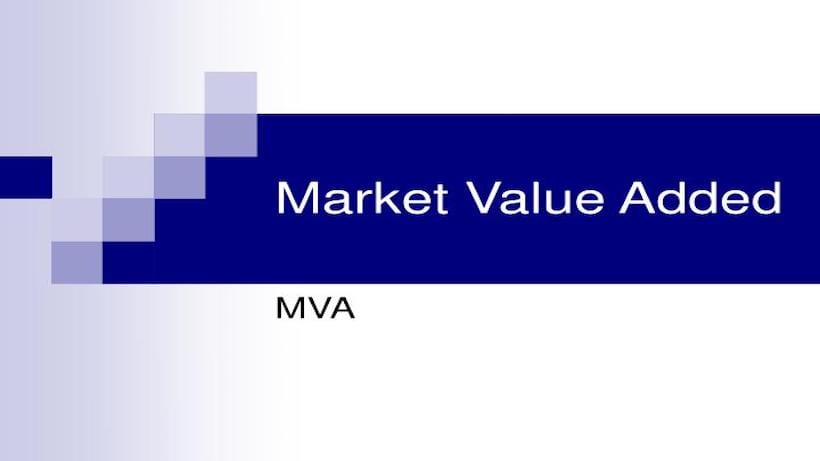Market Value Added (MVA) is the difference between the current market value of a firm and the capital contributed by investors (both bondholders and shareholders). In other words, it is the sum of all capital claims held against the company plus the market value of debt and equity. If MVA is positive, the firm has added value. If it is negative the firm has destroyed value.
MVA is difference between the company’s market value and book value of shares. According to Stern Stewart, if the total market value of a company is more than the amount of capital invested in it, the company has managed to create shareholder value. If the market value is less than the capital invested, the company has destroyed shareholder value
Market Value Added
MVA is derived by deduction the book value of the firm from its market capitalization. The book value of the firm is equity share capital plus reserves and surplus, minus any revaluation reserve and miscellaneous expenses. Market value of the firm can be determined dividing Earning Before Interest and Taxes (EBIT) by weighted average cost of capital.
The market value added (MVA) indicates the shareholders value creation. MVA is determined as difference between the total market value of the company and book value the economic capital, also named invested capital
Market value Added = Market value of the firm – Book value of the firm
The formula for MVA is:
Advertisement
where:
- MVA is market value added
- V is the market value of the firm, including the value of the firm’s equity and debt
- K is the amount invested in the firm
MVA is the present value of a series of EVA values. MVA is economically equivalent to the traditional net present value measure of worth for evaluating an after-tax cash flow profile of a project if the cost of capital is used for discounting.
The higher the MVA, the better it is. A high MVA indicates the company has created substantial wealth for the shareholders. A negative MVA means that the value of the actions and investments of management is less than the value of the capital contributed to the company by the capital markets, meaning wealth or value has been destroyed.
The aim of the company should be to maximize MVA. The aim should not be to maximize the value of the firm, since this can be easily accomplished by investing ever-increasing amounts of capital.
Recommended
